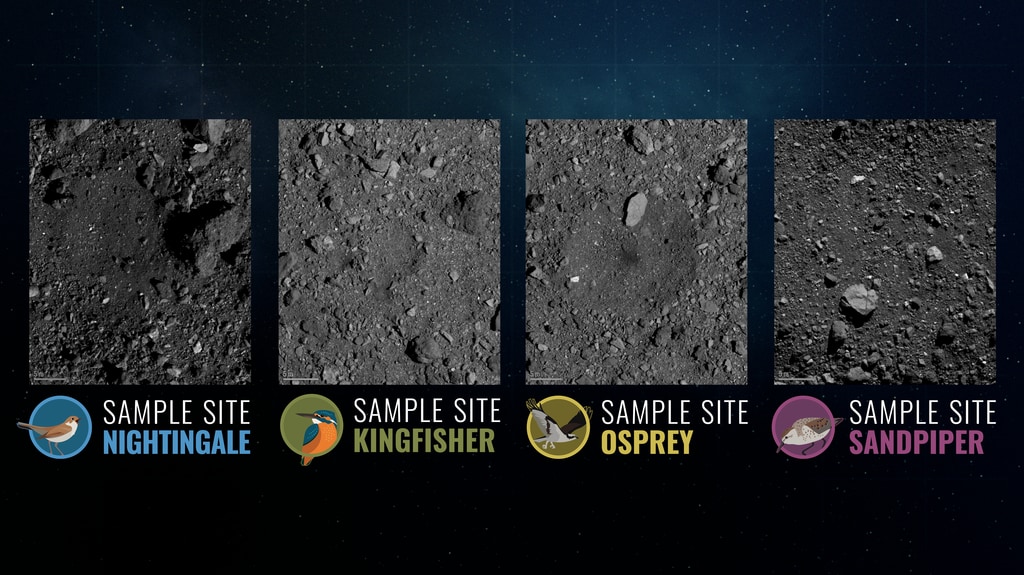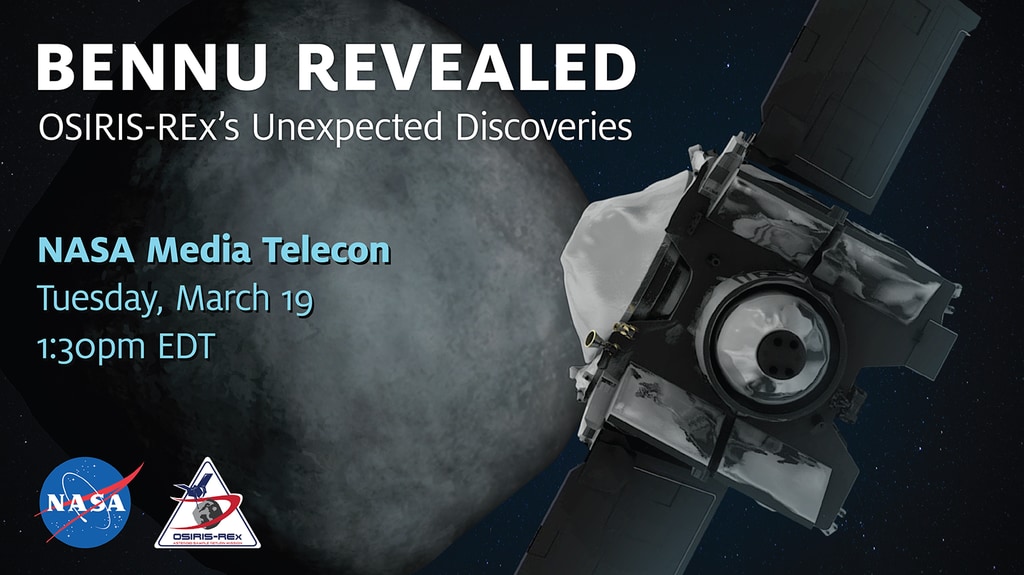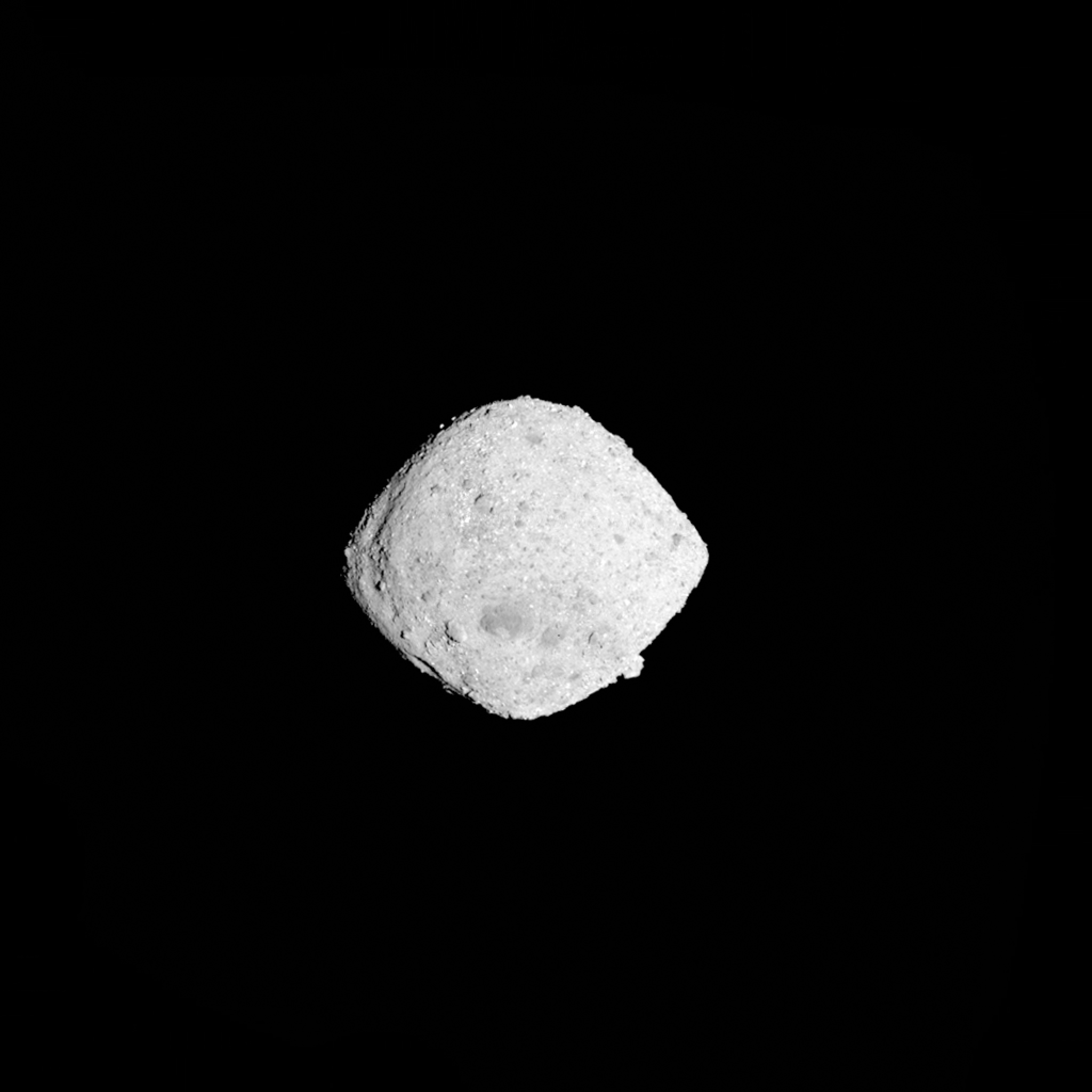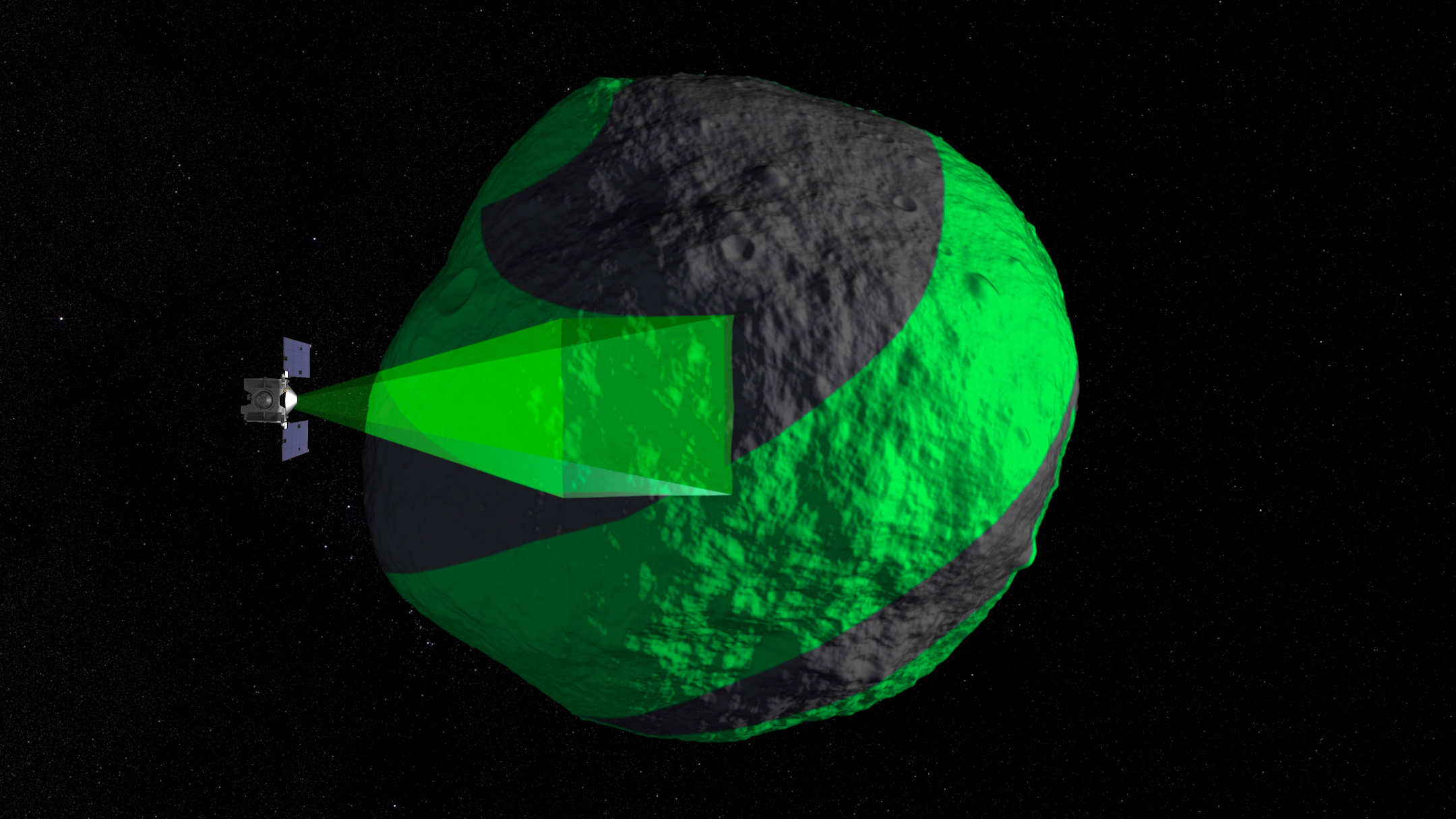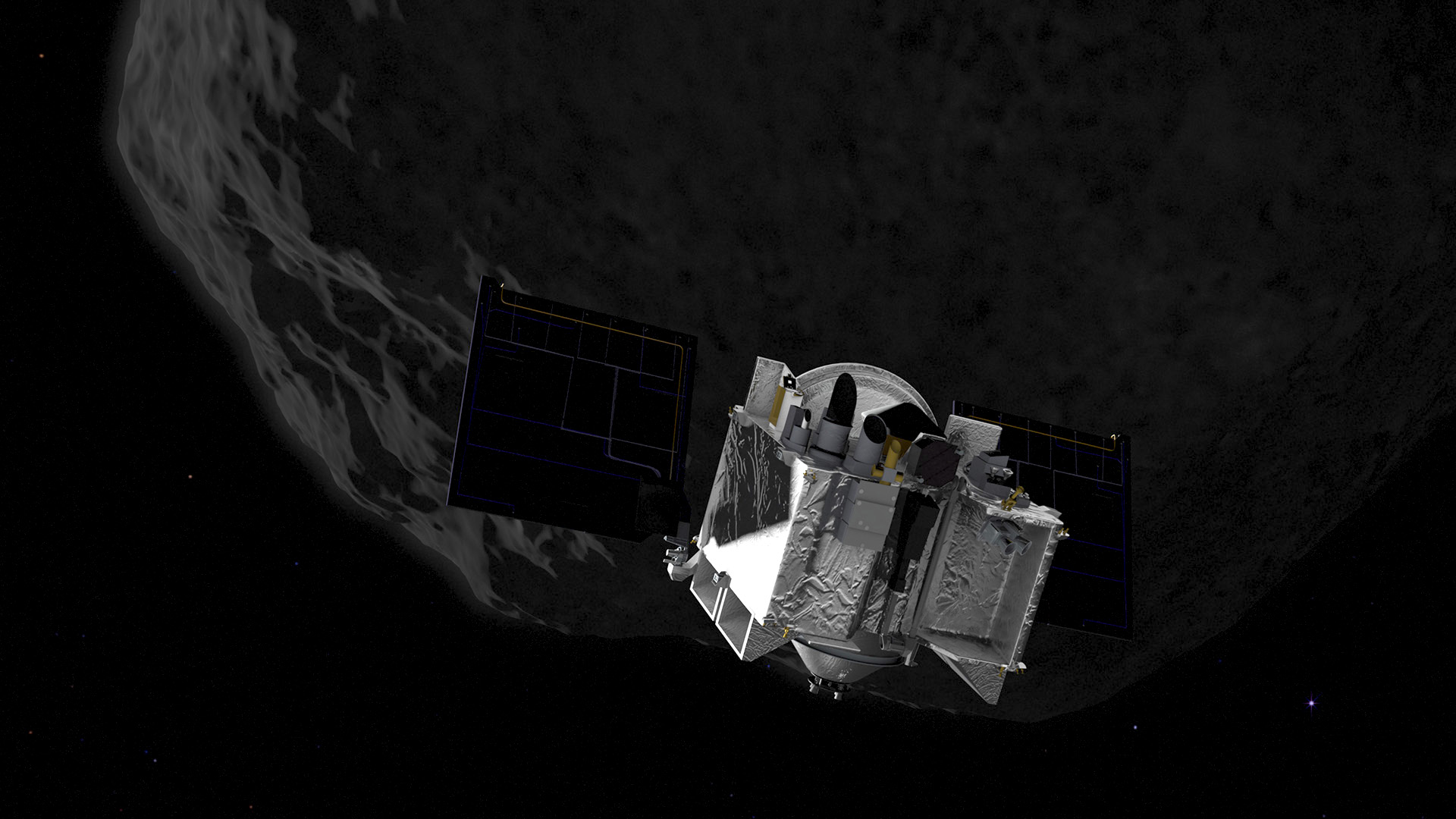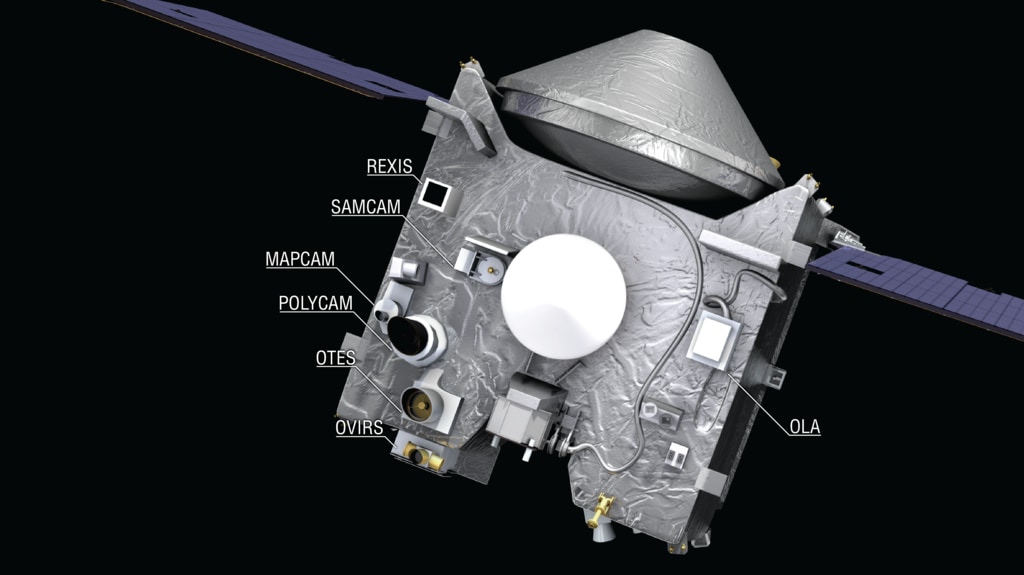OSIRIS-REx Arrives at Bennu -- 2018 AGU Press Conference
NASA’s OSIRIS-REx mission presented the science results gained during the spacecraft’s approach toward the asteroid Bennu at a press conference hosted during AGU’s Fall Meeting at 2 p.m. ET, Monday, Dec. 10.
The Origins, Spectral Interpretation, Resource Identification, Security-Regolith Explorer (OSIRIS-REx) spacecraft, which launched on Sept. 8, 2016, started asteroid science operations on Aug. 17, 2018, while still 1.4 million miles from the asteroid Bennu. Between that time and the spacecraft’s arrival at Bennu on Dec. 3, the mission made a number of discoveries about the asteroid.
The mission represents a valuable opportunity to learn more about the origins of our solar system, the sources of water and organic molecules on Earth, and the hazards and resources in near-Earth space.
The briefing participants are:
Jeffrey Grossman, OSIRIS-REx program scientist at NASA Headquarters
Dante Lauretta, OSIRIS-REx principal investigator at the University of Arizona, Tucson
Amy Simon, OVIRS deputy instrument scientist at NASA Goddard Space Flight Center
Michael Nolan, OSIRIS-REx science team chief at the University of Arizona, Tucson
For more information, go to nasa.gov/osiris-rex or asteroidmission.org.
The following video presents the press conference that corresponds with the slides that appear below. This event took place live at 2pm EST on December 10, 2018 at the American Geophysical Union conference in Washington DC. Watch this video on YouTube.

TAGSAM Banner Image
Credit: NASA/Goddard/University of Arizona
This image shows an artist’s rendering of the OSIRIS-REx spacecraft collecting a sample of material from Bennu’s surface in 2023.

- Grossman – New Frontiers
Credit: NASA-HQ

- Grossman – Planetary Fleet
Credit: NASA

- Grossman – Planetary Fleet/Small Bodies Missions
Credit: NASA

- Grossman – Small Bodies Fleet
Credit: NASA

- Grossman – NASA Small-Body Missions
Credit: NASA/University of Arizona

- Lauretta – Twelve-Image PolyCam Mosaic of Bennu
Credit: NASA/Goddard/University of Arizona
This mosaic image of asteroid Bennu is composed of 12 PolyCam images collected on Dec. 2 by the OSIRIS-REx spacecraft from a range of 15 miles (24 km). The image was obtained at a 50° phase angle between the spacecraft, asteroid and the Sun, and in it, Bennu spans approximately 1,500 pixels in the camera’s field of view.

- Lauretta – Mission Success Criteria
Credit: University of Arizona

- Lauretta - OSIRIS-REx Instruments
Credit: NASA/Goddard/University of Arizona

- Simon – OVIRS and OTES Overview
Credit: NASA/Goddard/University of Arizona/Arizona State University

- Simon – First OVIRS Spectrum of Bennu
Credit: NASA/Goddard/University of Arizona

- Simon – Hydrated Mineral Feature on Bennu Near 2.7 Microns
Credit: NASA/Goddard/University of Arizona/NASA Johnson Space Center/K.H. Joy

- Simon – OTES Spectrum of Bennu Compared to Meteorite Spectra
Credit: NASA/Goddard/University of Arizona/NASA Johnson Space Center/K.H. Joy

- Simon – Clay Mineral Formation and Hydration Process
Credit: NASA/Goddard/University of Arizona

- Nolan – Arecibo Radar
Credit: Arecibo Observatory
- Nolan – Comparing Arecibo Radar Data and Ground-Based Shape Model of Bennu
Credit: NASA/Goddard/University of Arizona/Arecibo Observatory
- Nolan – Comparing PolyCam Imagery and Ground-Based Shape Model of Bennu
Credit: NASA/Goddard/University of Arizona
- Nolan – Comparing PolyCam Imagery and Updated Preliminary Shape Model of Bennu
Credit: NASA/Goddard/University of Arizona

- Lauretta – MapCam Red/Green/Blue (RGB) Composite Image of Bennu
Credit: NASA/Goddard/University of Arizona

- Lauretta – Bennu Thermal Emission Map
Credit: NASA/Goddard/University of Arizona

- Lauretta – PolyCam Image of Bennu’s Surface
Credit: NASA/Goddard/University of Arizona
On Dec. 2, 2018, the PolyCam camera on NASA’s OSIRIS-REx spacecraft imaged Bennu from a range of 15 miles (24 km). This image is cropped to show one section of the asteroid.

- Lauretta – PolyCam Image of Bennu’s Surface – Boulder Pile Detail
Credit: NASA/Goddard/University of Arizona
On Dec. 2, 2018, the PolyCam camera on NASA’s OSIRIS-REx spacecraft imaged Bennu from a range of 15 miles (24 km). This image is cropped to show one section of the asteroid, and an area containing a boulder pile, approximately 52 feet (16 m) in width, is circled.

- Lauretta – PolyCam Image of Bennu’s Surface – Boulder Pile Detail Magnified
Credit: NASA/Goddard/University of Arizona
On Dec. 2, 2018, the PolyCam camera on NASA’s OSIRIS-REx spacecraft imaged Bennu from a range of 15 miles (24 km). This image is cropped and magnified to show an area containing a boulder pile approximately 52 feet (16 m) in width in detail.

- Lauretta – PolyCam Image of Bennu’s Surface – 35-Meter Fractured Boulder Detail
Credit: NASA/Goddard/University of Arizona
On Dec. 2, 2018, the PolyCam camera on NASA’s OSIRIS-REx spacecraft imaged Bennu from a range of 15 miles (24 km). This image is cropped to show one section of the asteroid, and an area containing a fractured boulder approximately 115 feet (35 m) in width is circled.

- Lauretta – PolyCam Image of Bennu’s Surface – 35-Meter Fractured Boulder Detail Magnified
Credit: NASA/Goddard/University of Arizona
On Dec. 2, 2018, the PolyCam camera on NASA’s OSIRIS-REx spacecraft imaged Bennu from a range of 15 miles (24 km). This image is cropped and magnified to show an area containing a fractured boulder approximately 115 feet (35 m) in width in detail.

- Lauretta – PolyCam Image of Bennu’s Surface – 31-Meter Fractured Boulder Detail
Credit: NASA/Goddard/University of Arizona
On Dec. 2, 2018, the PolyCam camera on NASA’s OSIRIS-REx spacecraft imaged Bennu from a range of 15 miles (24 km). This image is cropped to show one section of the asteroid, and an area containing a fractured boulder approximately 102 feet (31 m) in width is circled.

- Lauretta – PolyCam Image of Bennu’s Surface – 31-Meter Fractured Boulder Detail Magnified
Credit: NASA/Goddard/University of Arizona
On Dec. 2, 2018, the PolyCam camera on NASA’s OSIRIS-REx spacecraft imaged Bennu from a range of 15 miles (24 km). This image is cropped and magnified to show an area containing a fractured boulder approximately 102 feet (31 m) in width in detail.

- Lauretta – PolyCam Image of Bennu’s Surface Containing 20-Meter Crater
Credit: NASA/Goddard/University of Arizona
On Dec. 2, 2018, the PolyCam camera on NASA’s OSIRIS-REx spacecraft imaged Bennu from a range of 15 miles (24 km). This image is cropped to show one section of the asteroid containing a crater (20 m) in width.

- Lauretta – PolyCam Image of Bennu’s Surface Containing 20-Meter Crater Detail
Credit: NASA/Goddard/University of Arizona
On Dec. 2, 2018, the PolyCam camera on NASA’s OSIRIS-REx spacecraft imaged Bennu from a range of 15 miles (24 km). This image is cropped and a section of the asteroid containing a crater (20 m) in width is circled.

- Lauretta – PolyCam Image of Bennu’s Surface Containing 20-Meter Crater Detail Magnified
Credit: NASA/Goddard/University of Arizona
On Dec. 2, 2018, the PolyCam camera on NASA’s OSIRIS-REx spacecraft imaged Bennu from a range of 15 miles (24 km). This image is cropped and magnified to show an area containing a crater (20 m) in width.

- Lauretta – OSIRIS-REx Asteroid Operations Timeline
Credit: University of Arizona

- Lauretta – TAGSAM Test Image
Credit: NASA/Goddard/University of Arizona
This image shows an artist’s rendering of the OSIRIS-REx spacecraft collecting a sample of material from Bennu’s surface in 2023. The inset photograph shows the OSIRIS-REx Touch-and-Go Sample Acquisition Mechanism (TAGSAM) sampling head extended from the spacecraft at the end of the TAGSAM arm. The spacecraft’s SamCam camera captured the image on November 14, 2018 as part of a visual checkout of the TAGSAM system, which was developed by Lockheed Martin Space to acquire a sample of asteroid material in a low-gravity environment. The imaging was a rehearsal for a series of observations that will be taken at Bennu directly after sample collection.

- Lauretta – Mission Science Objectives
Credit: University of Arizona

- Lauretta – Twelve-Image PolyCam Mosaic of Bennu
Credit: NASA/Goddard/University of Arizona
This mosaic image of asteroid Bennu is composed of 12 PolyCam images collected on Dec. 2 by the OSIRIS-REx spacecraft from a range of 15 miles (24 km). The image was obtained at a 50° phase angle between the spacecraft, asteroid and the Sun, and in it, Bennu spans approximately 1,500 pixels in the camera’s field of view.
For More Information
See the following sources:
Credits
Please give credit for this item to:
NASA's Goddard Space Flight Center
-
Producer
- Michael Starobin (KBR Wyle Services, LLC)
-
Graphic designer
- Heather Roper (The University of Arizona)
-
Scientists
- Jeffrey Grossman (NASA/HQ)
- Dante Lauretta (The University of Arizona)
- Amy A. Simon (NASA/GSFC)
- Michael Nolan (The University of Arizona)
-
Support
- Dan Gallagher (USRA)
-
Technical support
- Aaron E. Lepsch (ADNET Systems, Inc.)
Release date
This page was originally published on Monday, December 10, 2018.
This page was last updated on Wednesday, May 3, 2023 at 1:46 PM EDT.

